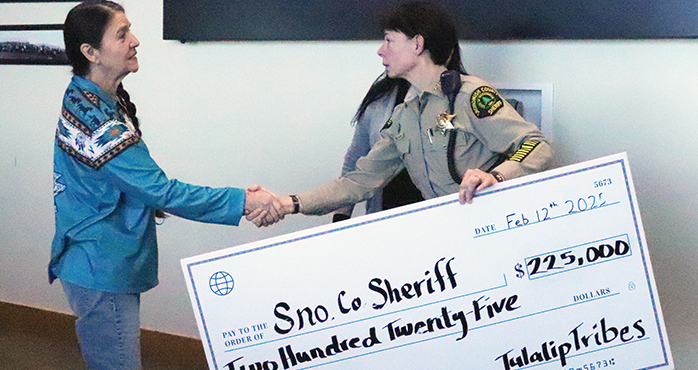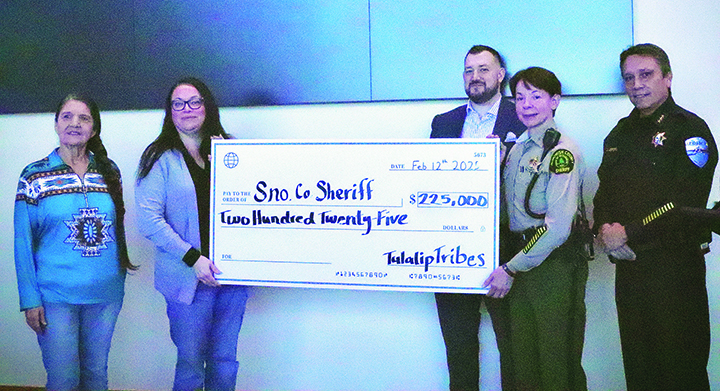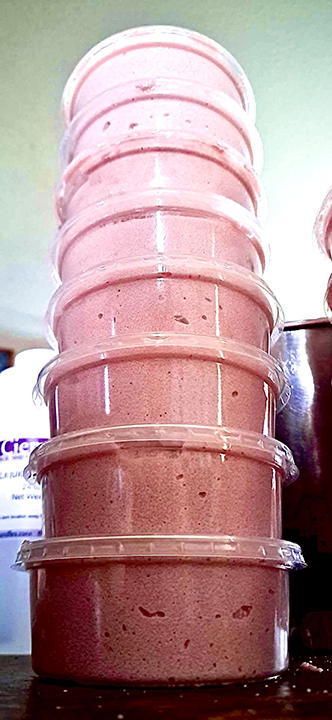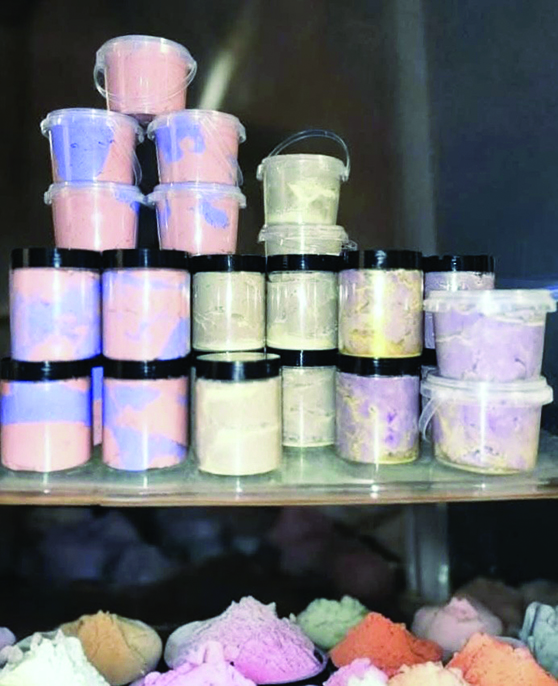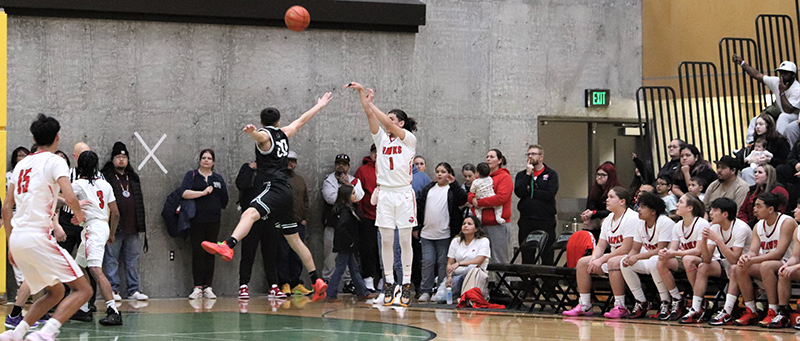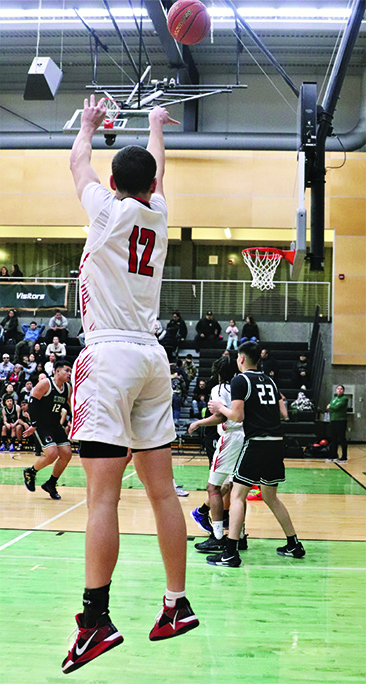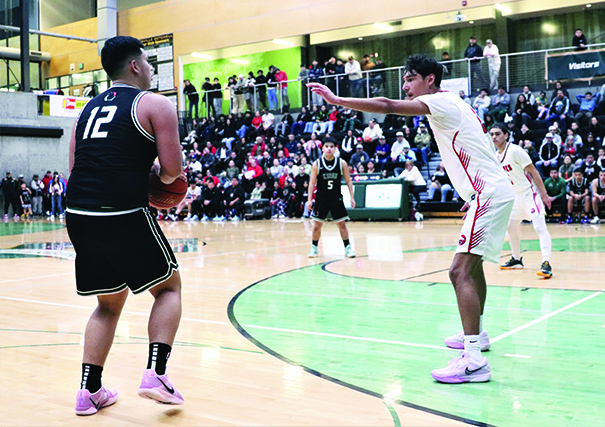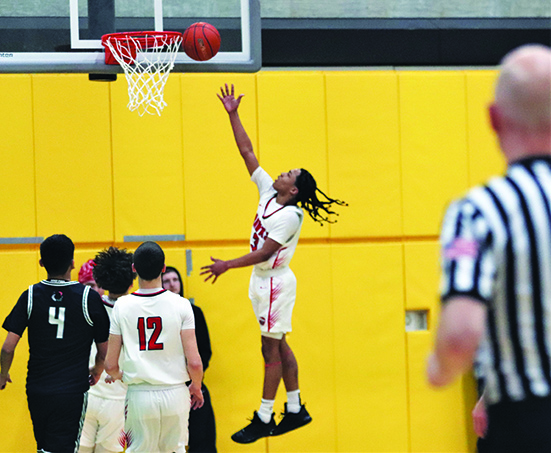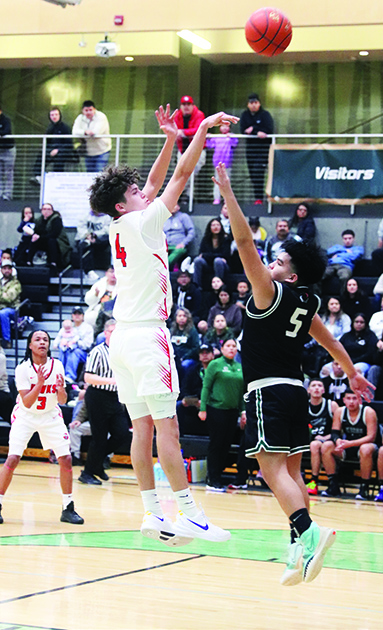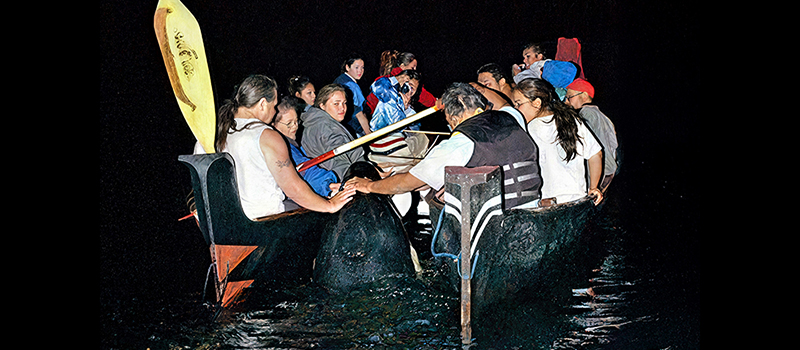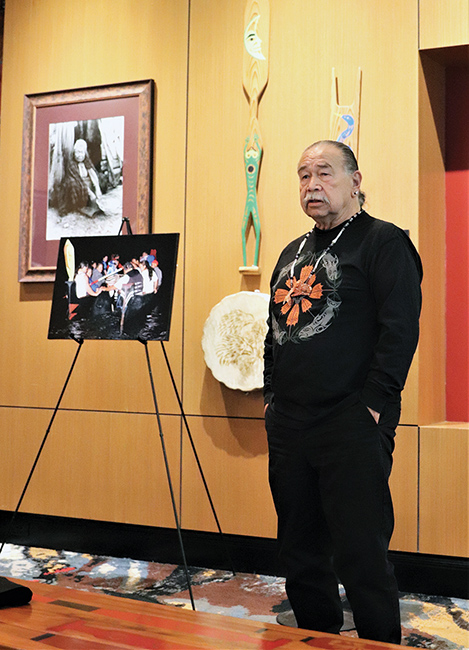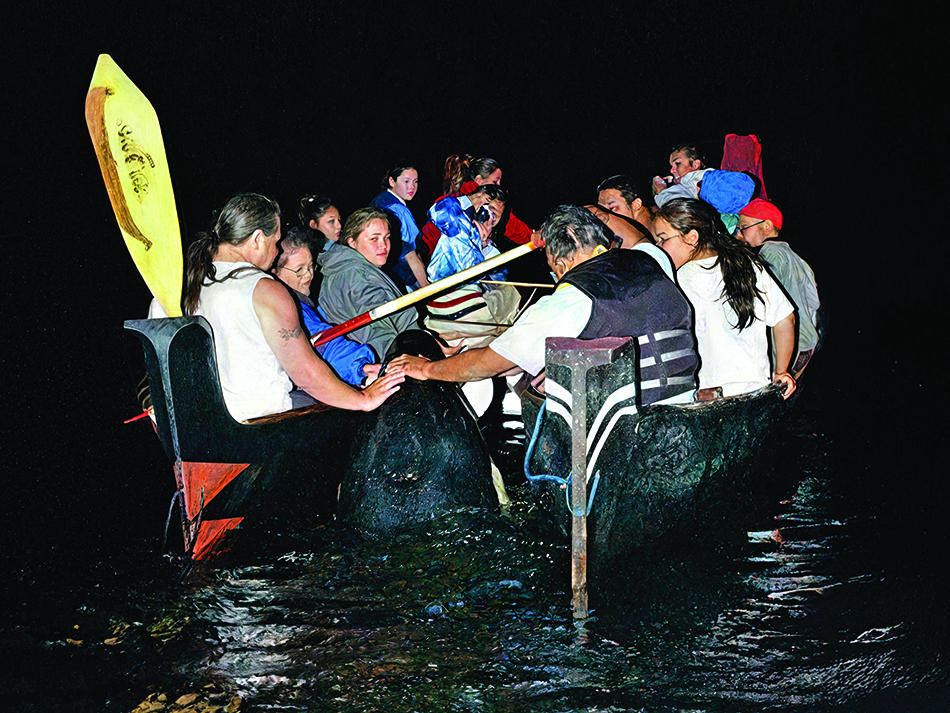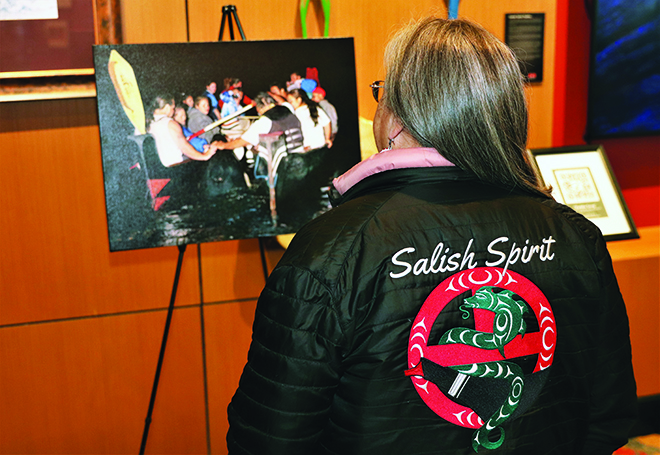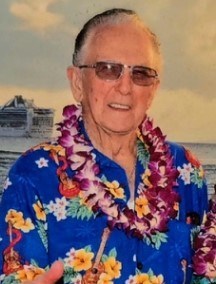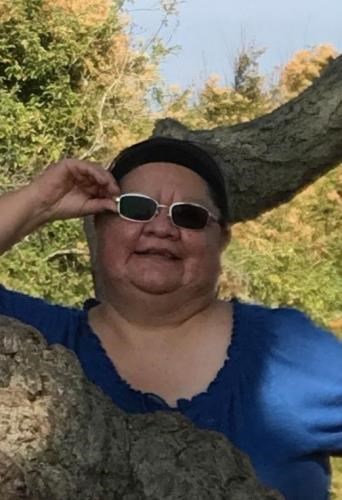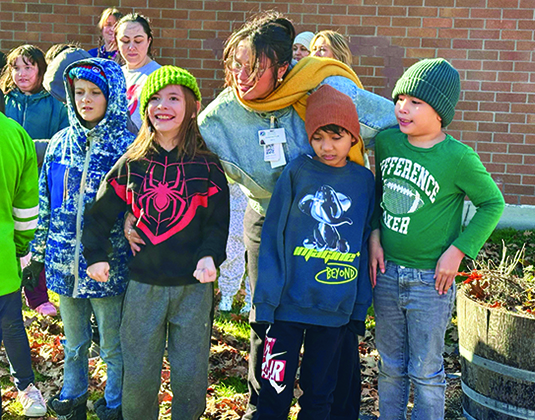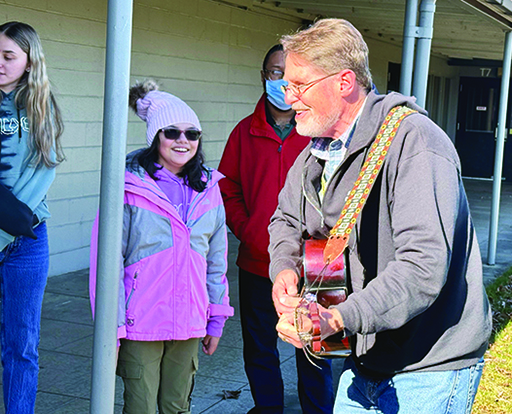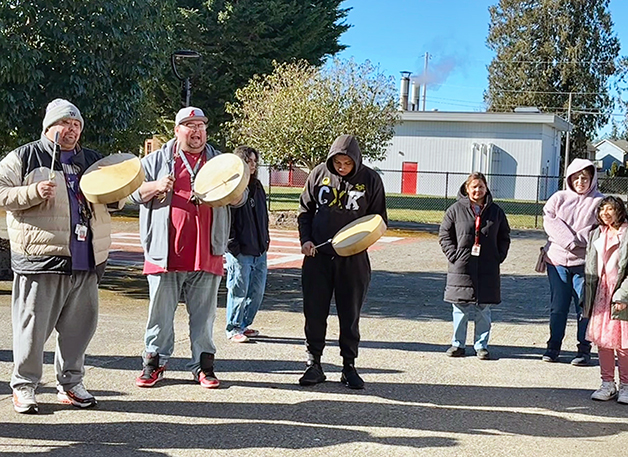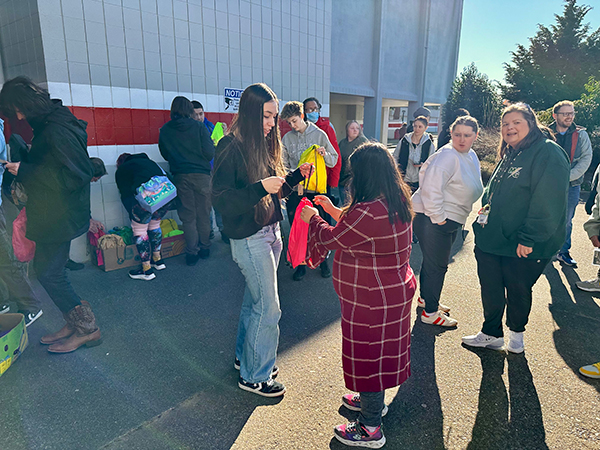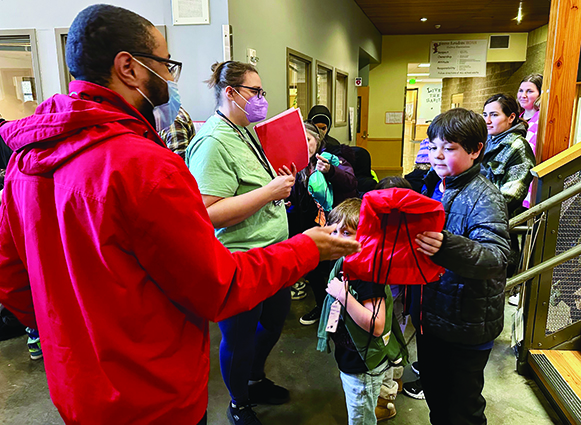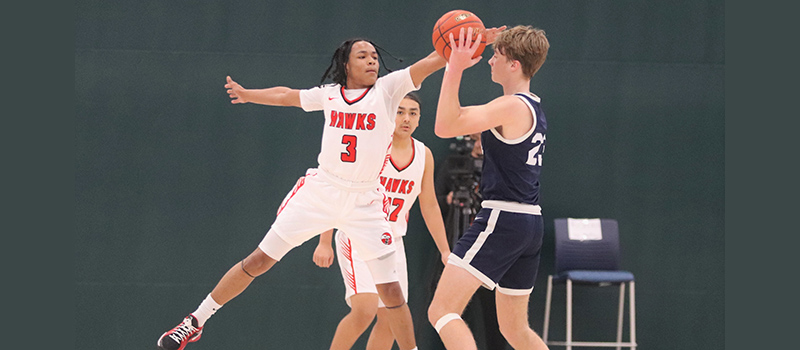
By Micheal Rios, Tulalip News
A year ago, the Tulalip boys were playing in the 4th round of the Tri-District Tournament hosted at Mt. Vernon Christian. In a highly contested game with the Muckleshoot Kings, the Hawks claimed a 3rd place finish after a thrilling 65-59 W.
Fast forward to this past weekend, the Tulalip boys were again playing in the 4th round of the Tri-District Tournament. This time it was hosted at the newly minted Muckleshoot Community Center. Their opponent? Summit Classical Christian (15-5) out of Issaquah. Just like last year, it would be another knock-down, drag-out battle that would come down to late game execution with a 3rd place finish and 2-game guarantee at State on the line.
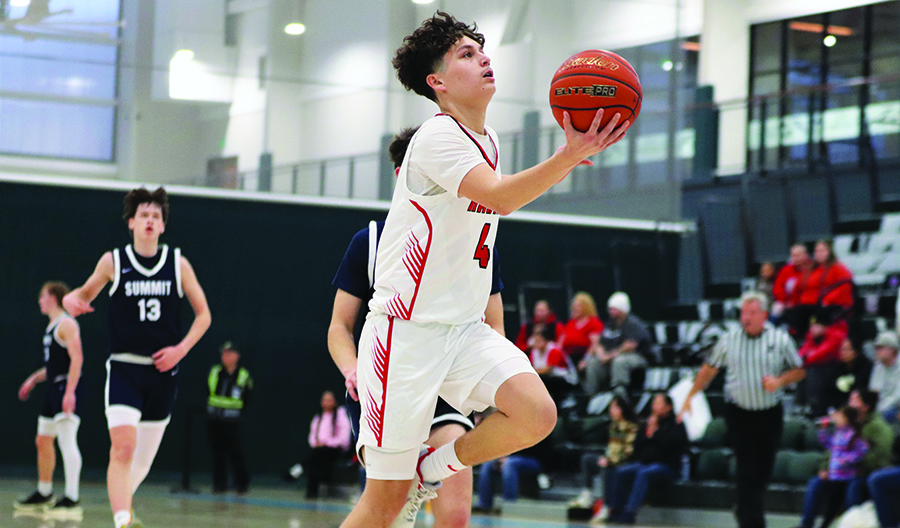
The bright lights of Muckleshoot’s gym made for the perfect backdrop of what would be an epic example of clutchness by the Heritage Hawks (18-3). From the opening tip, it was clear the game would be a battle of wills and contrasting styles of play. Summit had all the height with several six-footers on the court at all times, but what Heritage lacked in height they made up for with blazing speed and quickness.
In the 1st quarter, Tulalip was determined to push the tempo and attack the basket regardless if shot blockers awaited them or not. They wanted Summit to know that they’d keep attacking and weren’t afraid of any contact from a would-be six-foot defender. Their constant pressure on the defense yielded multiple uncontested looks from downtown, where Amare splashed one and Davien splashed two, giving Heritage an early 20-13 lead.
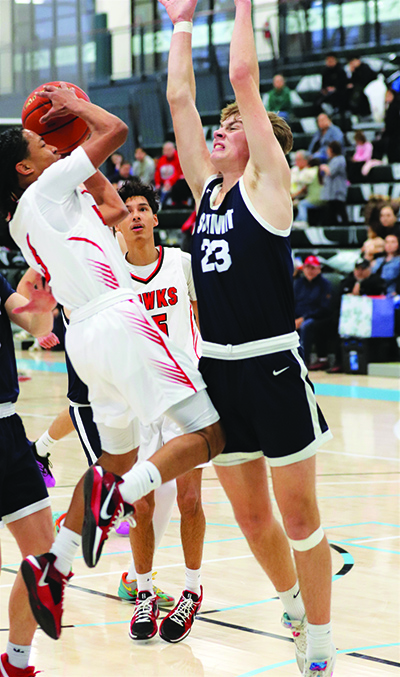
Summit was intentional about getting the ball down low and consistently exploiting mismatches to their advantage in the 2nd quarter. Their height and rebounding ability were difficult to counter in the half court sets. Fortunately, Davien continued to his hot shooting from outside by hitting back-to-back 3-pointers. Notably, he was the only Hawk to get a bucket in the 2nd quarter. Going into halftime the game was knotted at 30-30.
Both teams scored exactly 13 points in the 3rd quarter. Summit’s scoring came from contested jumpers and long distance 2s, while Heritage’s offense came from a series of runners and floaters in the painted area.
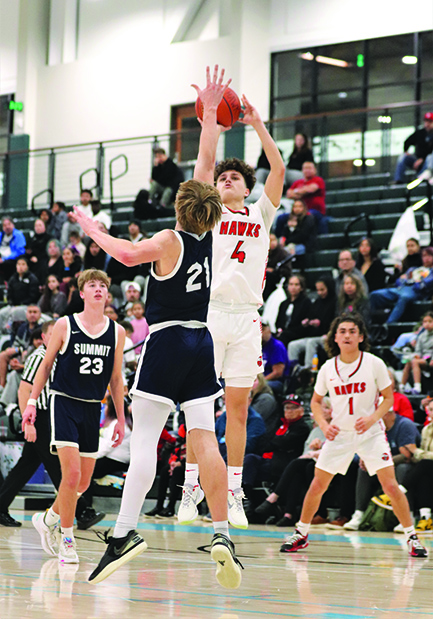
Entering the 4th quarter, the game was tied 43-43. Guards J.J. Gray and Davien both showed their athletic prowess with a fancy finish each, contorting their bodies to get a shot off while multiple defenders went for a block attempt. Scoring on high degree of difficulty shots, Summit countered by splashing a 3 and then another long 2.
Trailing 47-48 with 6:30 to play, coach Shawn Sanchey put Amare back in the game with 4 fouls. In high school ball, players only get 5 fouls. Amare’s foul trouble forced him to sit out the entire 3rd quarter and opening plays of the 4th. The bench time meant he had the fresh legs necessary to ignite his team’s uptempo style again.
Amare back in the game gave Tulalip a 3-headed ballhandling monster that Summit was too exhausted and too worn down to keep up with. Over the game’s final six minutes, the boys decisive decision making and commitment to ball movement resulted in crisp passes and clutch buckets to the delight of their adoring fan base.
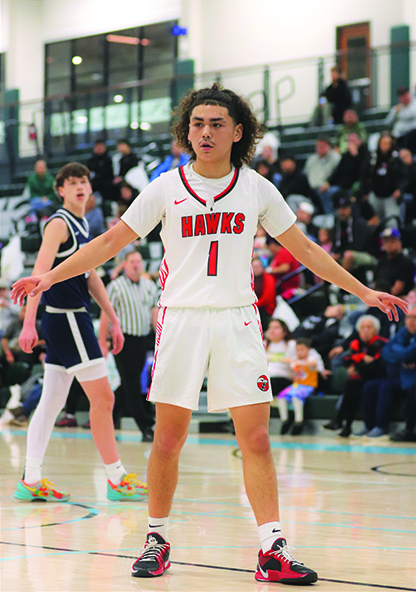
With the three ballhandlers dissecting the defense, forwards Davis and Tokala each scored two buckets apiece in the closing moments to clinch victory. A final score of 66-53 after once trailing 47-48 meant a so impressive 19-5 run by Heritage down the stretch to secure another Tri-District 3rd place finish.
Following the game, sophomore point guard Amare Hatch said of playing the final frame with 4 fouls, “My mindset was to keep playing hard defense, keep my hands up, and to stay out of my head so I could just play ball. I know my role is to bring the energy and when I’m spreading the ball around, it just opens up the game for everyone else. That’s when we’re playing our best. It feels really good to get this dub in front of all our fans and even the bigger tribal community who showed up to support us here in Muckleshoot.”
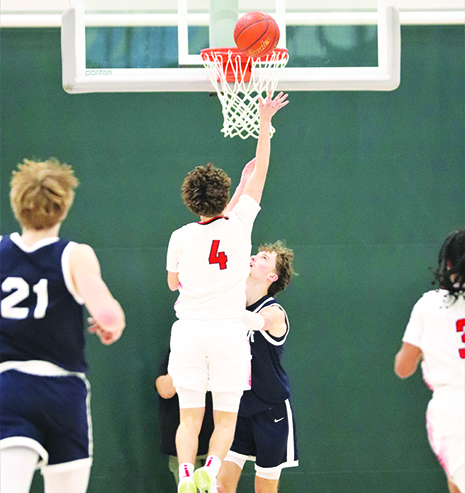
While Amare only finished with 3 points, he filled the intangibles box score by showcasing heart, hustle and grit when his team needed him most. J.J finished with 19 points, Davis added 12 points, and Davien continued to add to his resume by leading all scorers with 26 points, including making 4 of the team’s 5 made 3-pointers.
“Compared to all the height Summit had, we are a smaller run and gun team, but we are powered by a group of guards who will run for 4 quarters and not get tired,” said junior shooting guard Davien Parks. “At this point in the playoffs, we are going to keep seeing teams with more size and bigger bodies but when you have confidence in your game, like we do, that won’t stop us from playing our brand of basketball. Confidence can make up for a lot. For me, I believe I can takeover in any game I play and that this team can beat anybody in the State.”
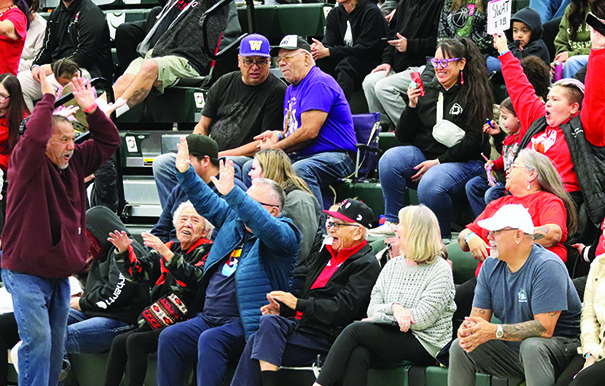
A Heritage Hawks team full of confidence and armed with a determination to make school history now move on to the WIAA State Tournament. Their first round opponent is Willapa Valley. Game scheduled for 8pm Friday, February 28, at W.F. High School in Chehalis.
